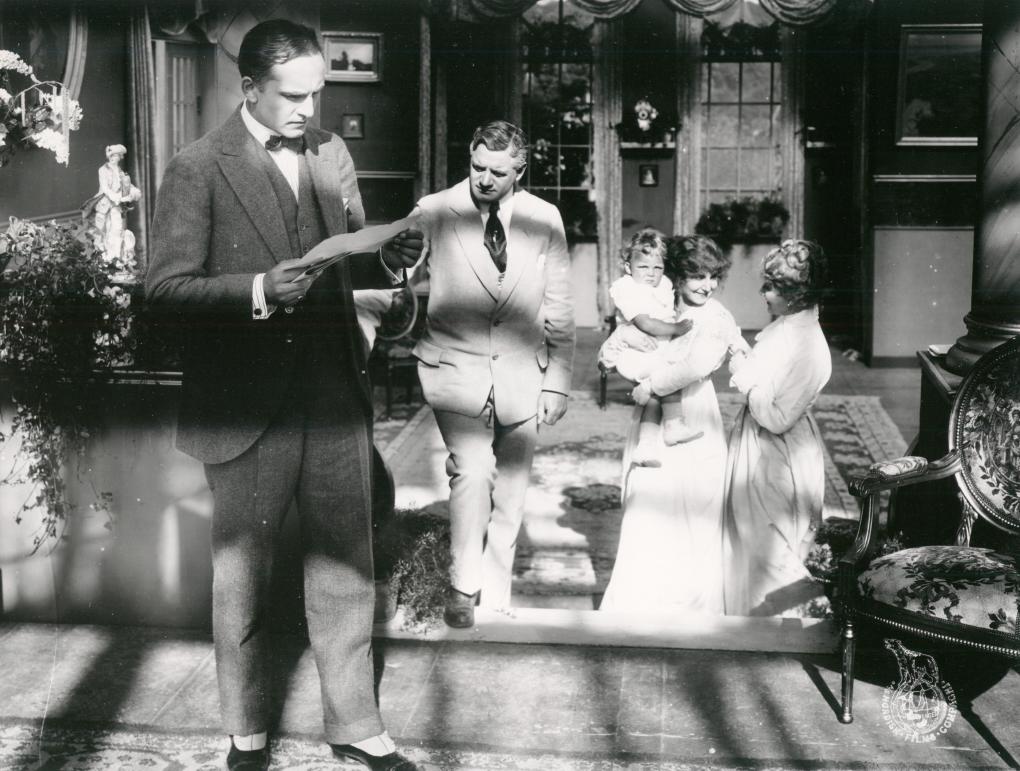Countess Juliane still possesses the charm of youth, despite her early acquaintance with the hardships of life. She was just 18 when she married Count Albrecht von Iseneck. Though considerably older than she, his considerable intelligence and righteous character captivated her so powerfully that she made herself believe that life at his side would be the greatest happiness. But marriage was a bitter disappointment. The count was too old to understand her natural desire to taste the pleasures of life, and his professional commitments left him little time for his young bride. Inevitably, things came to a head and the countess got her freedom to live life as she pleased. While she enjoyed her freedom in the years that followed, she ever more keenly felt the emptiness of her life. Then she met a young man, Prince Ulrich von Engernheim-Kypstein. On her wedding day, her former husband had presented her with a masterful imitation of the famous Lamoral lace, and knowing that Prince Ulrich owned the real lace only stoked her interest in him. Amused by her infatuation with lace, the prince boldly gave her the priceless treasure and, to avoid leaving an empty showcase at Castle Kypstein, had the imitation placed there instead. Neither took quite seriously the ominous, old legend that whoever owned the lace was destined to wreck another’s marriage and would have to pay with his or her life.
The prince’s love lets some sunshine into Juliane’s otherwise grey life. But soon, the prince is transferred and Juliane doesn’t see him again for almost a year. When she does see him again, she bitterly learns that he now loves another – a cousin of his, no less. Juliane arranges a tryst with him that will be their last. During the tryst, they are alarmed by noises coming from the room next door and discover that thieves are at work. The prince wants to take immediate action, but Juliane is afraid their secret love will be revealed. As a result, Juliane’s jewellery and the priceless Lamoral lace are stolen. To avoid getting mixed up in the police investigation, the prince tries to get an alibi, but this only attracts attention and the case ends up in court. He is acquitted and for a while he lives happily with his wife, Alix. But dark clouds are gathering. Juliane’s former chambermaid, who actually masterminded the theft, has the prince exposed in a scandal sheet and he is charged with perjury. Again, the court acquits the likable prince, but he is passed up by Count Iseneck who feels his honour has been defiled and challenges the prince to a duel. Mortally wounded, the prince collapses to the ground and dies. Meanwhile, seized by an inexplicable longing, Alix took the train to town that day and is beside herself with grief when she learns that her beloved husband is dead. A few days later, a funeral procession passes by Iseneck’s palace and despondent Juliane, whose mind has darkened, hears the muted sounds of the funeral march. The tragedy in which she had such a big hand is over.
| Production company | Nordisk Films Kompagni |
| Distributor | Fotorama |
| Release date and place: | 14.11. 1919 / Panoptikon |
| Based on | The novel "Kniplinger" (1912), by Paul Lindau |
Directed by
| August Blom | Director |
Screenplay
| Carl Th. Dreyer | Screenwriter |
Cinematography by
| Louis Larsen | Camera Operator |
Cast
| Egill Rostrup | Count Albrecht von Iseneck |
| Agnes Rehni | Countess Juliane, the count's wife |
| Gudrun Houlberg | Princess Alexis, prince's daughter |
| Aage Fønss | Prince Ulrich von Engernheim-Kypstein |
| Aage Hertel | Baron Emmerich von Saza |
| Ellen Jacobsen | Bertha |
| Peter Nielsen | Hotte |
| Christian Schrøder | Hobble-Fritz |
| Johannes Ring | |
| Emma Wiehe | |
| Alf Blütecher | |
| Maggi Zinn | |
| Agnes Lorentzen | |
| Tronier Funder | |
| Olga Hansen |
